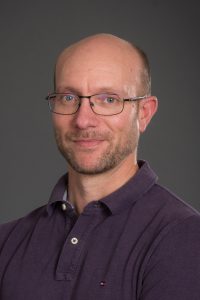
Biography
Education
Honors
Thomas Schalch studied Molecular Biology at the ETH in Zurich from 1995-1999 where his fascination with the world of biological macromolecules and their mechanisms became focused on chromatin and gene regulation. He therefore joined the lab of Prof. Tim Richmond for his PhD to study the structure of the chromatin fiber and obtained his PhD in 2004 from the ETHZ Zurich. His PhD work shed light on the folding of nucleosomes in the chromatin fiber and established that regular fibers of nucleosomes prefer to stack into zig-zag arrangements.
In 2006 he joined the group of Prof. Leemor Joshua-Tor as a postdoctoral fellow at Cold Spring Harbor Laboratory, New York, to investigate the macromolecular complexes of protein and RNA that silence gene expression. Using the fission yeast model system, this work revealed molecular mechanisms of the RITS and CLRC complexes and contributed to understanding of how epigenetic marks are translated into silencing of genomic regions.
A Swiss National Science Foundation Professorship provided the basis for Thomas Schalch to start his independent career in 2012 at the Department of Molecular Biology at the University of Geneva, Switzerland, where he continued to study the molecular mechanism of gene silencing complexes and their interaction with chromatin.
In 2018 the Schalch lab moved to the University of Leicester, United Kingdom, where Thomas Schalch joined the Leicester Institute of Structural and Chemical Biology.
Selected publications
- Stirpe A., Guidotti N., Northall S., Kilic, S., Hainard, A., Vadas, O., Fierz, B., Schalch, T. (2021). SUV39 SET domains mediate crosstalk of heterochromatic histone marks. eLife 10, e62682, Open Access Article, bioRxiv Preprint
- Leopold K., Stirpe A. and Schalch, T. (2019). Transcriptional gene silencing requires dedicated interaction between HP1 protein Chp2 and chromatin remodeler Mit1. Genes & Development 33, 565-577 Open Access Article
- Ekundayo, B., Richmond, T.J., and Schalch, T. (2017). Capturing structural heterogeneity in chromatin fibers. Journal of Molecular Biology 429, 3031-3042. free article, doi, UNIGE archives
- Job, G., Brugger, C., Xu, T., Lowe, B.R., Pfister, Y., Qu, C., Shanker, S., Baños Sanz, J.I., Partridge, J.F. and Schalch, T. (2016). SHREC Silences Heterochromatin via Distinct Remodeling and Deacetylation Modules. Molecular Cell, 62, 207–221. Article
- Kuscu, C., Zaratiegui, M., Kim, H.S., Wah, D.A. Martienssen, R.A., Schalch, T. and Joshua-Tor, L.(2014). CRL4-like Clr4 Complex in Schizosaccharomyces Pombe Depends on an Exposed Surface of Dos1 for Heterochromatin Silencing. PNAS, 111, 1795-1800. Article
- Schalch, T., Job, G., Shanker, S , Partridge, J. F., Joshua-Tor, L. (2011). The Chp1-Tas3 core is a multifunctional platform critical for gene silencing by RITS. Nature Structural and Molecular Biology 18, 1351–7. Article
- Schalch, T., Job, G., Noffsinger, V. J., Shanker, S., Kuscu, C., Joshua-Tor, L., and Partridge, J. F. (2009). High-affinity binding of Chp1 chromodomain to K9 methylated histone H3 is required to establish centromeric heterochromatin. Molecular Cell 34, 36–46. Article
- Schalch, T., Duda, S., Sargent, D. F., and Richmond, T. J. (2005). X-ray structure of a tetranucleosome and its implications for the chromatin fibre. Nature 436, 138–41. Article
- Dorigo, B., Schalch, T., Kulangara, A., Duda, S., Schroeder, R. R., and Richmond, T. J. (2004). Nucleosome arrays reveal the two-start organization of the chromatin fiber. Science 306, 1571–3. Article
- Dorigo, B., Schalch, T., Bystricky, K., and Richmond, T. J. (2003). Chromatin fiber folding: requirement for the histone H4 N-terminal tail. Journal of Molecular Biology 327, 85–96. Article


